11 Vibrant Deck Color Ideas to Brighten Your Backyard
A splash of color can be the difference between deck and decked out


While you may think decks can only be designed in a few colors, we’ve got news for you. Wood and composite decking boards are versatile: You can paint, stain, or leave them in their natural form. With so many options, you might have a hard time choosing a color option that will be best for your own deck. To help expand your deck designing knowledge, we’ve compiled some bold and unique deck color ideas sure to leave an impression.
1. Soften With Gray

The neutral gray color of this deck is in beautiful contrast to the rustic red door and brick siding. It breaks up the darker colors of the exterior and provides a visual break for your eyes by giving a softer color experience. Consider using a shade of gray for your deck if you’re going for a similar, soft aesthetic against a darker home.
2. Opt for Two Tones of Wood
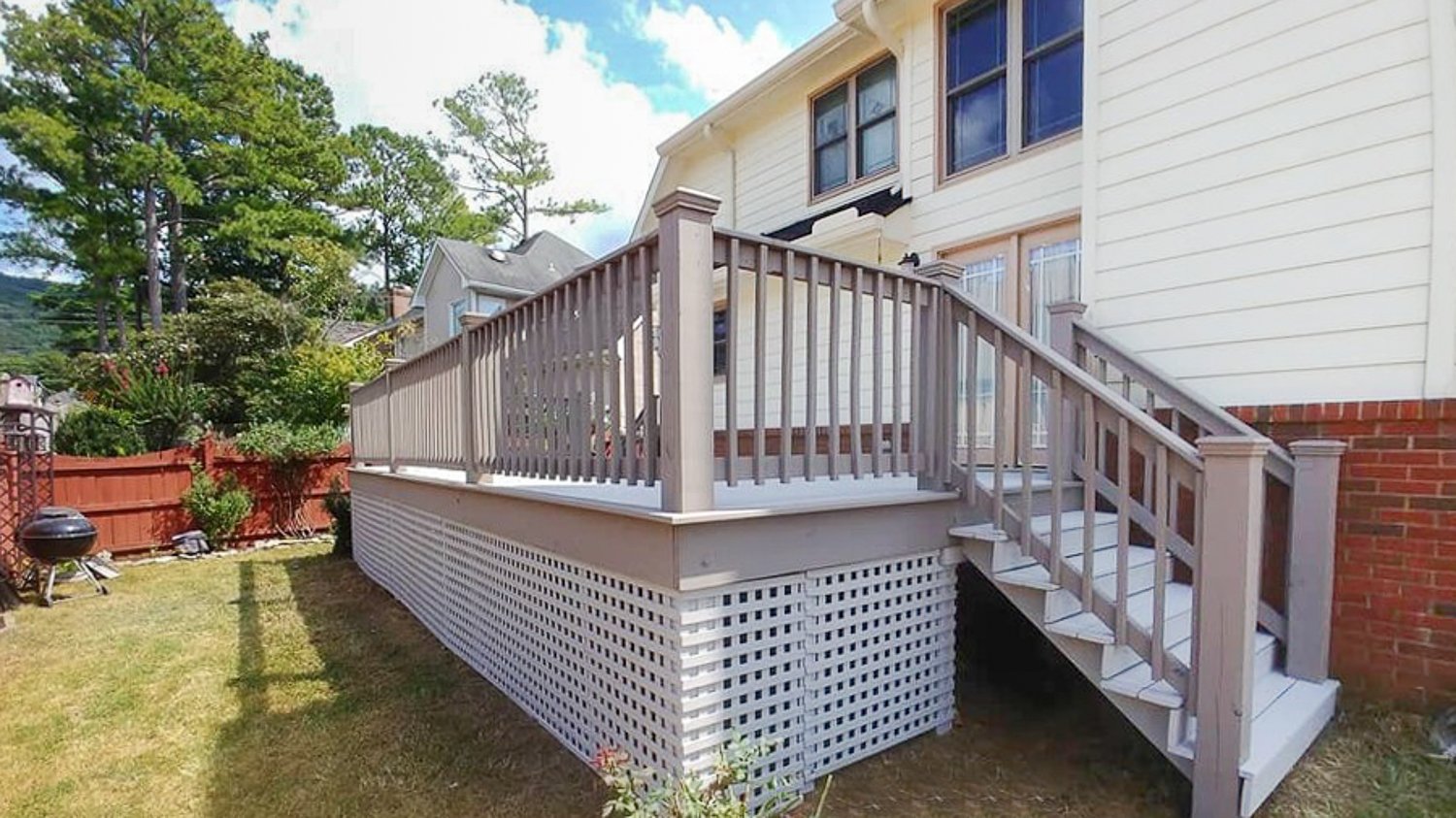
Creating a contrast with two tones of wood for your deck is a great way to explore color options. The use of white on this deck makes it look crisp while the gray railing adds depth. If you’re looking to add contrasting colors to your deck, try a lighter color as your base and a darker color as your accent. A local deck painter can help you look at different shades to pick two that work well together.
3. Punch It Up With Pops of Color

While traditional and natural deck colors are always popular, go against the grain and choose something fun like a bright red to liven up your deck. A pop of color will brighten your backyard and make any greenery or plants look even more spectacular. Even if you don’t paint your entire deck in one bright color, you can use a stunning shade to accent the railing or steps to still keep it fun and fresh.
4. Get Back to Basics

A white deck offers a classic, crisp look, and it doesn’t mean you’re sacrificing style. You can jazz it up with colorful patio furniture and other accents to make it look like a vacation house. Or, if modern is more your style, you can add a sleek outdoor couch and firepit to make it your own oasis. In short: It’s a blank canvas for you to style up or down.
5. Mix in Metal
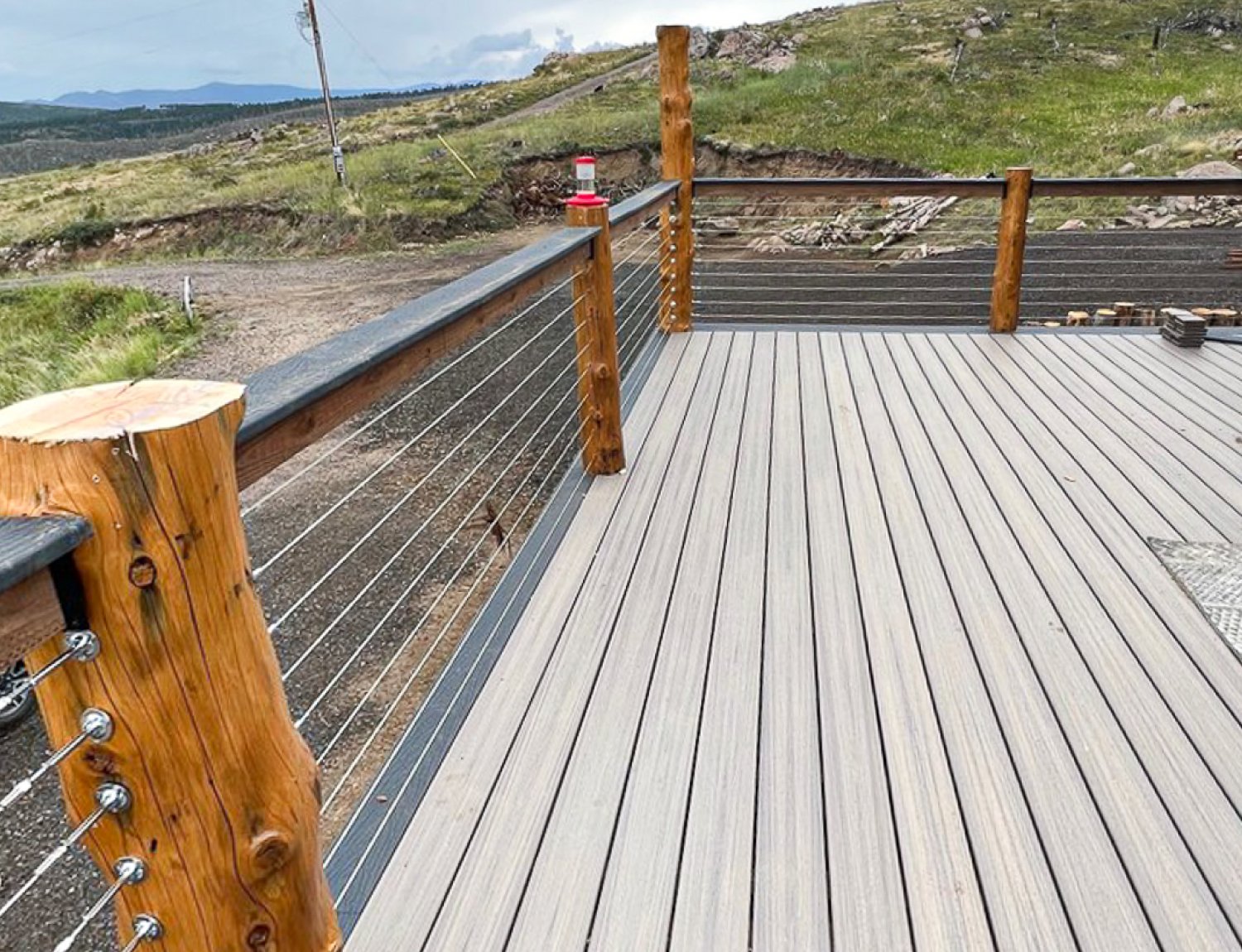
A wood or composite deck can be a great way to blend your home with the nature that surrounds it. However, consider adding metal accents—via the railing, as seen here—to give your deck an industrial edge. These unique accents give your deck some personality while still remaining functional. If you’re not totally sold on adding metal to the deck directly, you can add metal furniture to still achieve the same look without making it a permanent part of your deck.
6. Go for Monochromatic Elegance
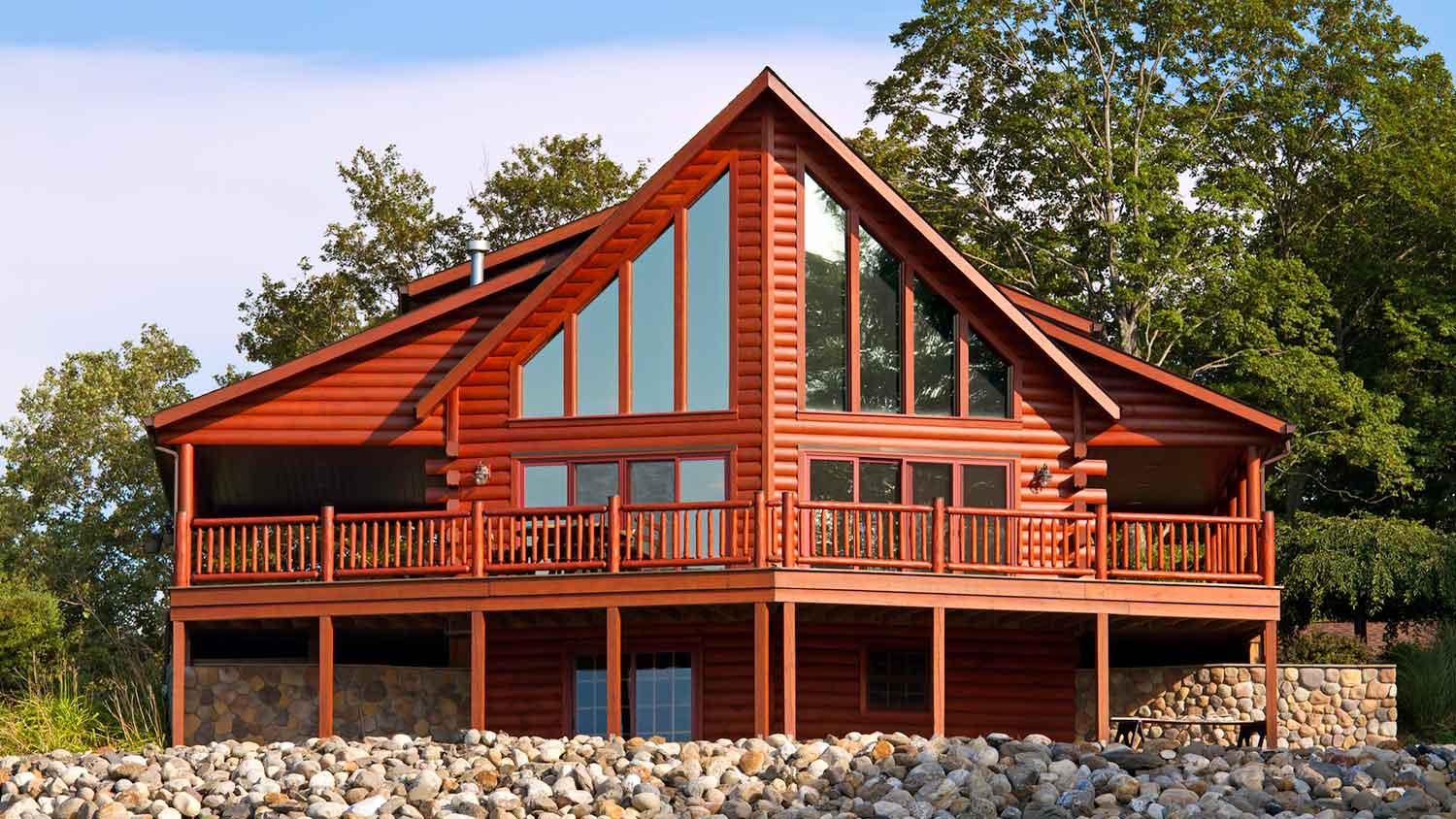
Commit to one color for your deck that is nearly identical to your home for an elegant and seamless extension of your house’s floor plan. This design is especially useful for homes with an architectural marvel that you don’t want visitors to miss.
In this example, for instance, all the attention is on the vaulted ceilings, the design of which looks even more elongated with the top-to-bottom monochromatic paint job.
7. Use Red to Highlight Brick

A bold brick house is something to be proud of, so play it up with the addition of a red-stained wood deck. We love the addition of yellow (or other brightly colored) patio furniture to create a focal point. Don’t be afraid to add a red deck to a brick house; it’ll only enhance the beauty of your exterior.
8. Extend Your Interior Palette
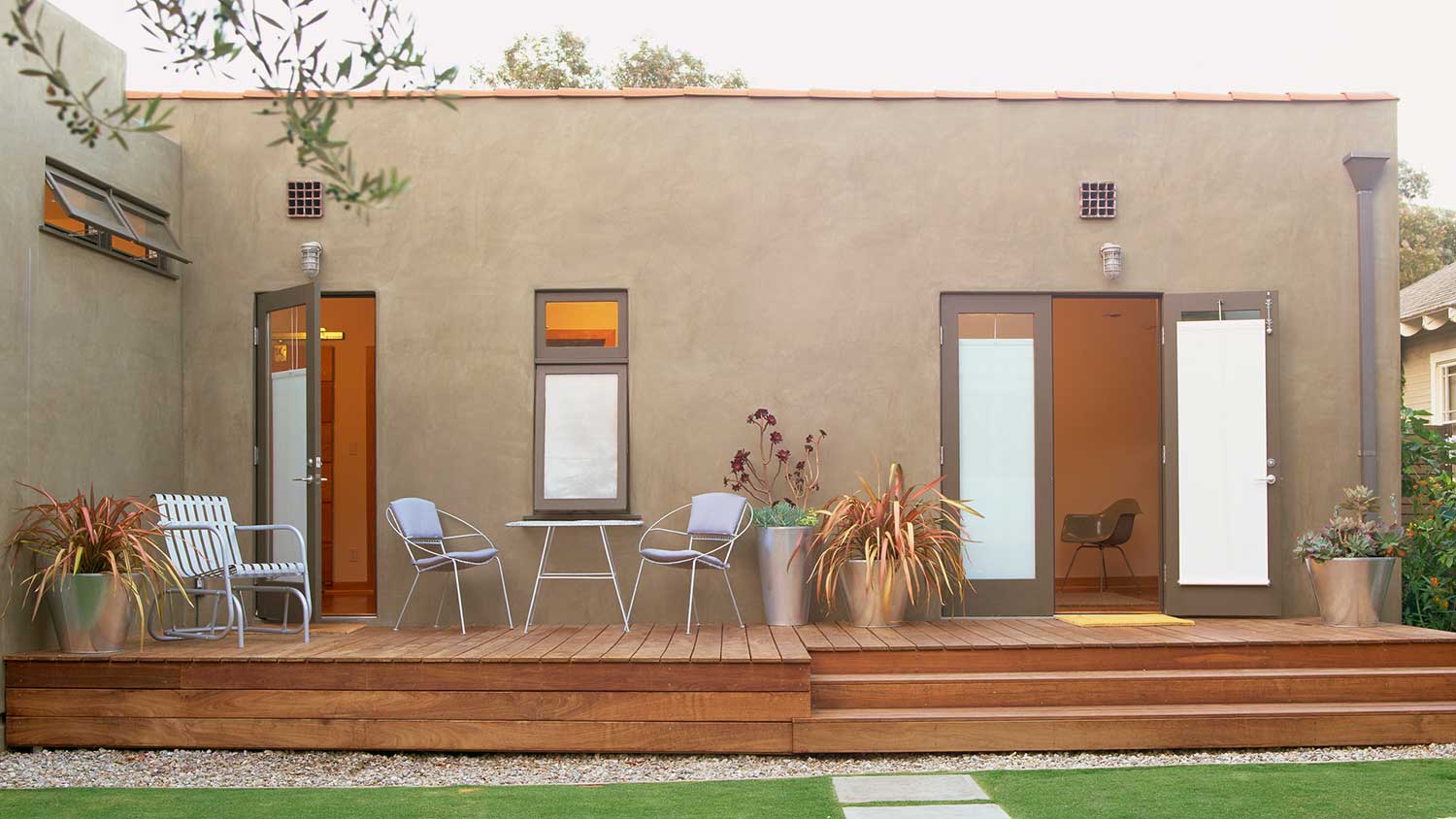
From the outside, the deck looks like an extension of the indoor flooring, highlighting the organic shades inside and out. While you don’t necessarily have to match your outdoor materials to your indoor ones, it can make your deck feel more like a part of your home’s design. Consider adding similar-colored chairs, tabletops, and even outdoor lighting to match your home’s interior.
9. Get Matchy
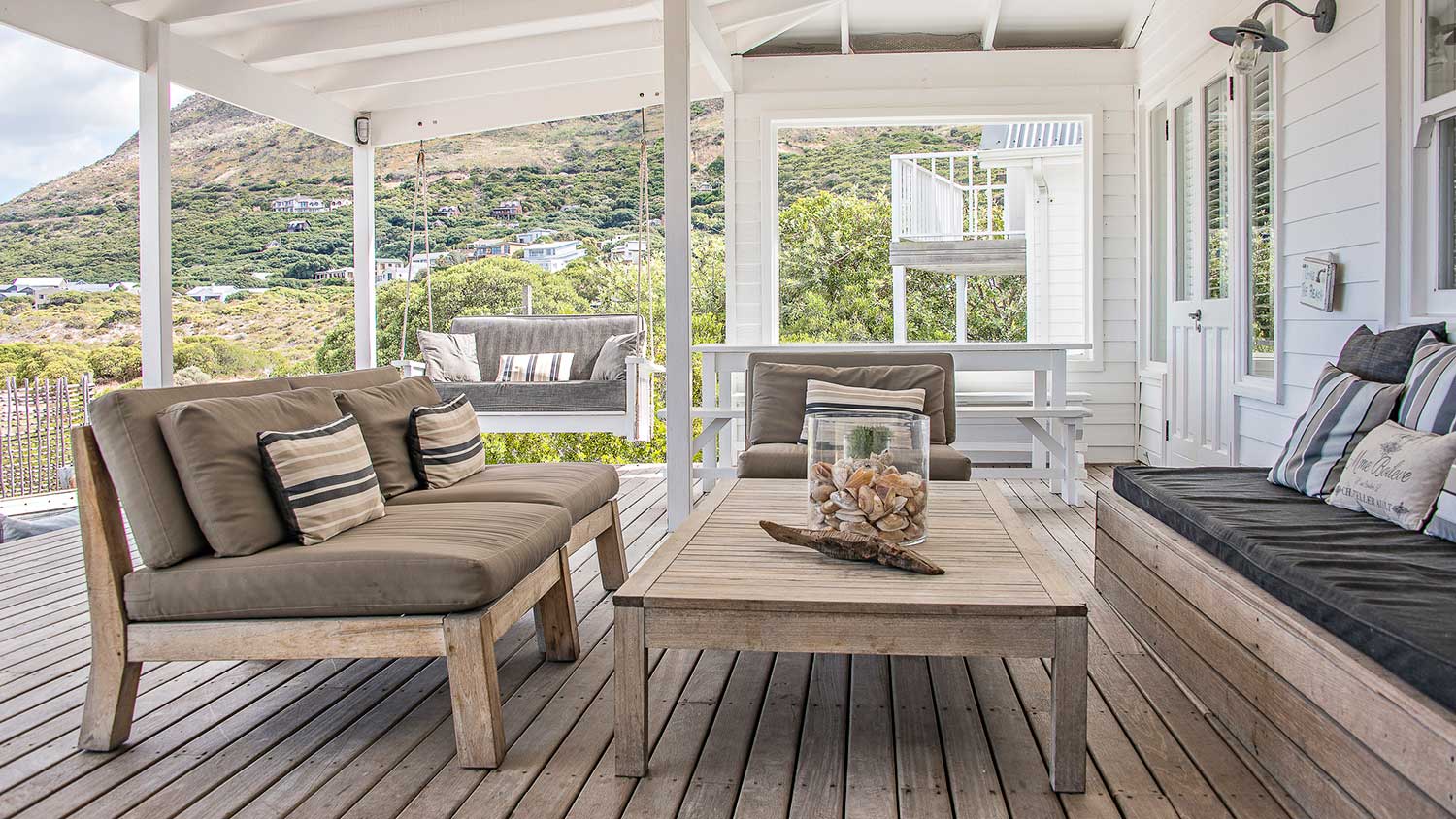
Don’t be afraid to pick a deck color that closely matches the color of your furniture; double up on muted tones for a seamless look, and use it to create a stark contrast with a clean, white exterior paint job on your home. The result? Extremely chill, beach vacation vibes that you can have even if you’re nowhere near the beach.
10. Go Au Naturale
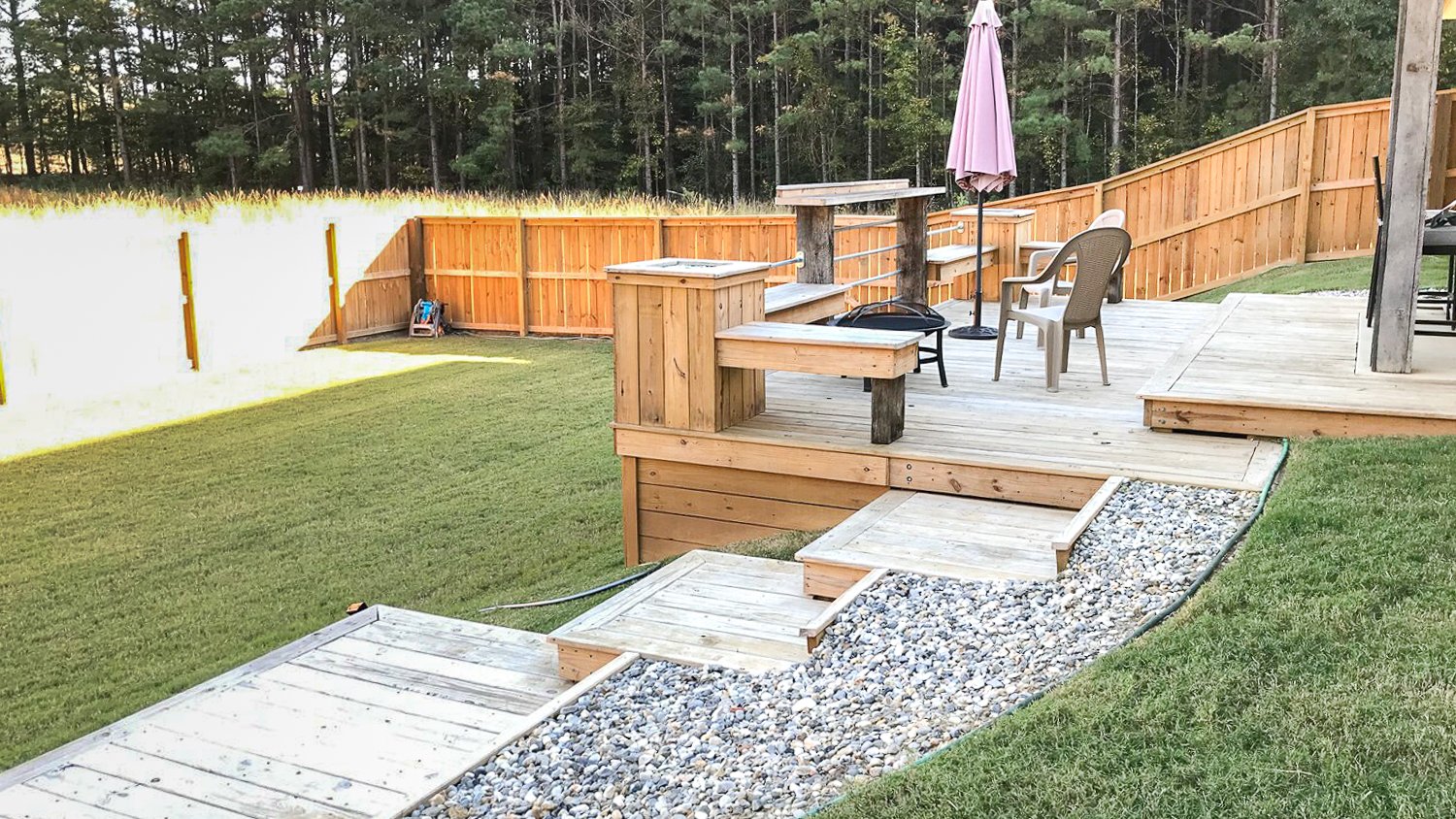
What better way to celebrate the idea of nature than by leaving your deck in its natural state? While treating your deck with a sealant is necessary to keep moisture out, it’s not necessary to stain or paint it for aesthetic reasons. For an even more nature-inspired look, consider landscaping with rocks around your deck steps like in the deck above.
11. Embrace the Weathered Look
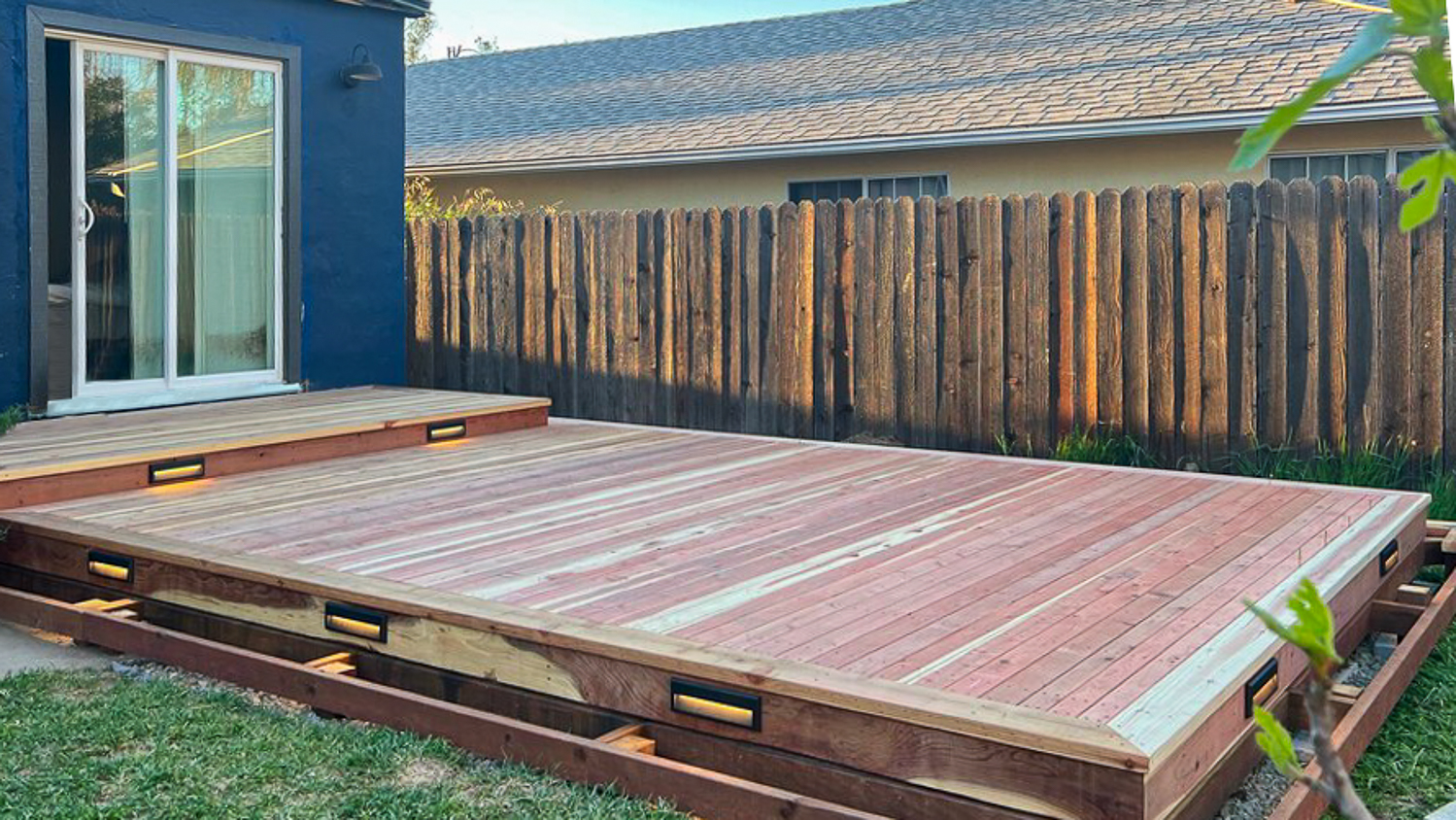
While painting your deck can give it a crisp and refined look, you can always take a different route and stain your deck to give it a weathered appearance. This deck embraces the natural weathered look while still having some color applied, giving it lots of personality. This look can be achieved with either semi-transparent or transparent deck stain, which can be found at most hardware stores.
C.E. Larusso contributed to this piece.
Frequently Asked Questions
You get to choose if your deck should be lighter or darker than your house; there’s no wrong answer. However, there are perks to choosing one type of color over the other, which might influence your decision. Deck colors that contrast the exterior of your home will help make the deck look more defined. Darker colors are easier to clean and show less dirt than lighter colors, though lighter deck colors are cooler in the summer.
Decks can either be stained or painted, depending on your preference. Typically stain is less expensive than paint, but paint offers more color options that might better match your aesthetic. No matter what you choose, both options protect your deck from outdoor elements like rain, snow, and general wear and tear.
When choosing between deck stain or paint, knowing what will last longer is important. Deck paint lasts longer than deck stain. With deck paint, you can get up to 10 years of coverage before you need to reapply. With deck stain, that time is significantly shorter at two to three years.
The cost to paint a deck can range from $500 to $2,000 depending on labor costs, the size of your deck, and the type of paint that you choose. The cost to stain a deck is a little less expensive, ranging from $550 to $1,250. It’s important to remember, however, that stain doesn’t last as long as paint, so it’s very possible that you’ll need to spend additional money more quickly.





- Planning for Decking: Everything You Need to Know to Add a Deck to Your Home
- How to Build a Deck You'll Love for Years to Come
- Top Deck Maintenance Tips for Every Decking Material
- Deck Step Down: Should My Deck Be Level With My Home?
- Who Builds Decks? Who to Call and What to Know
- The Ultimate Deck Safety Checklist for Homeowners
- How to Repair a Deck: DIY Fixes from the Boards to the Railings
- How to Paint Your Deck in 4 Steps
- How to Level a Deck: Everything You Need to Know
- The Best Way to Stain Your Deck















